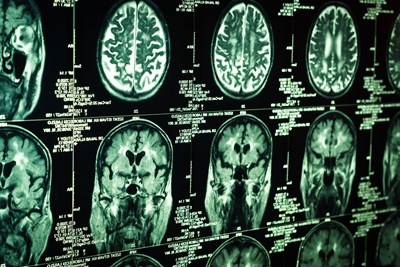Dealing with a brain tumor can be a scary time for you and your loved ones. Although the prognosis for glioblastoma is usually not good, it’s still important to be knowledgeable about what you’re dealing with. Being more informed can help you make difficult choices, and better choices may mean an ultimately better quality of life.
Glioma
Glioma is the umbrella term for a certain type of tumor, including glioblastomas. It houses several types of tumors that form from glial cells in the brain or spinal cord. The type of glioma present plays a large role in outlook, treatment options, and prognosis.
Glial Cells
Glial cells are the types of cells that create glioblastomas and the other types of glioma. There are four main types of glial cells: astrocytes, ependymal, oligodendrocytes, and microglia. They are all responsible for supporting and helping nerve cells. Of the four, microglia are the only cells that don’t directly form a tumor, although they also play a role.
Astrocytes
Astrocytes are the star shaped glial cells directly responsible for glioblastomas. They provide nutrients to the nerve and cells and hold neurons in place. Because of this, glioblastomas have a ready blood supply, which is what makes them grow so quickly.
Primary Glioblastoma
Each tumor is measured using a scale of I through IV, I being the most benign and IV being the most malignant. Glioblastoma is the most common type of primary brain tumor, which means that it starts out as a grade IV, and continues to grow quickly.
Secondary Glioblastoma
Secondary glioblastomas are more common in people under the age of 45. Secondary glioblastomas begin as a grade II or III tumor and grow more slowly than primary glioblastomas.
Ionizing Radiation
While researchers have yet to discover the exact cause of glioblastoma, they do know that age, gender, and chromosomes all play a role. Additionally, they have found a connection between ionizing radiation and glioblastoma. Ionizing radiation is not the kind that comes with power lines or cell phones, but with atomic bombs, and ironically, the kind of radiation used for treating some other brain tumors and types of cancer.
Awake Brain Surgery
Surgery is usually the first treatment option for a glioblastoma. However, because of the nature of glioblastoma, as well as the placement of the tumor itself, surgery becomes dangerous when it gets close to areas of primary brain function. As such, patients must often be awake for the surgery, so the surgical assistants can have them move and speak to ensure everything is still working properly.
Radiation Therapy
Radiation therapy is often used when surgery isn’t an option or in addition to surgery when not all of the tumor can be removed. Using a computer, high energy waves are sent directly at the tumor in order to destroy it or its remaining parts.
Chemotherapy Wafers
During surgery to remove a tumor, doctors sometimes place a nickel-sized wafer of chemotherapy drugs into the empty spot. The drug is slowly released to destroy any remaining parts of the tumor and to help prevent recurrence.
Targeted Drug Therapy
Certain drugs are made to target the abnormalities of cancerous cells. They block it, which (hypothetically) makes them die. Additionally, it can be given intravenously for glioblastoma to cut off the tumor’s blood supply, which also kills the cells.



